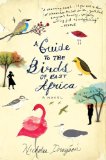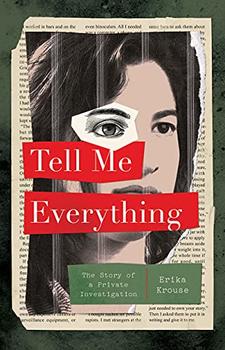Summary | Excerpt | Reviews | Beyond the Book | Read-Alikes | Genres & Themes | Author Bio

A Novel
by Nicholas DraysonThis article relates to A Guide to the Birds of East Africa
The Republic of Kenya is located on the eastern coast of the African continent (map).
It is approximately 225,000 square miles (580,000 square kilometers), with a
population of 38 million people (2008). The official languages are English &
Swahili, and Nairobi is its capital city. Primary exports include coffee and
tea.
The area was inhabited from at least 2000 BCE, with its first residents being
tribal groups. Arab traders settled in the coastal areas around the 8th
century. They developed trade during this time between the Arab world and India,
primarily in ivory and slaves.
The Portuguese were the first Europeans to explore the region, "discovering" it
in 1498 while seeking new trade routes. They occupied Mombasa, one of the
coastal cities, in 1505. The next 200 years were marked by fighting between the
Arabs and Portuguese, with the Arabs eventually prevailing, only to cede control
to the militarily superior British in the late 19th century. In 1895
the area, now called British East Africa, was officially named a protectorate.
The British initially devoted most of their attention to neighboring
protectorate Uganda, which was rich in natural resources. They built a railway
from Mombasa on the coast to Kisumu in the Ugandan interior, using primarily
Indian laborers. Many of these workers remained in the country after the
completion of the railway, developing into the country's merchant class.
At the turn of the 20th century, British attention shifted to the arable lands
of Kenya. White farmers set up coffee and tea plantations, and native
populations were forced off the most productive lands. Racial segregation
effectively excluded Africans and Asians from owning property. This pressure
over land ownership led to the formation of several nationalist organizations in
the 1920s, the most prominent of which was the Kenyan African Union (KAU).
Tensions increased during World War II. Africans were conscripted, and with
their involvement in the war came an expansion of political consciousness. The
Mau Mau were formed – guerrilla troops who took an oath committing themselves to
the expulsion of all white settlers in East Africa. Open revolt erupted in 1956.
The British crushed the rebellion and executed the Mau Mau leaders, but the
white settlers remained shaken, and the restrictions against African land
ownership were lifted.
The British decided to prepare for East African independence beginning in 1960.
The KAU reformed into the Kenyan African National Union (KANU), with Jomo
Kenyatta as its leader. KANU won the open elections that took place the
following year, and voted in favor of the creation of a parliamentary system.
Full independence was granted in 1963, with Kenyatta becoming the country's
first president.
Kenyatta was in office for 15 years, followed by Daniel Arap Moi, who led the
country for another 24 years. During the decades the two governed Kenya, the
political environment became increasingly unstable, autocratic and repressive.
Opposition parties were banned, their leaders imprisoned, and assassination
became a common technique to quell dissent. Elections were fraudulent, and
government corruption rampant.
In 2002, Kenya swore in its third president, Mwai Kibaki, in what international
monitors deemed to be fair elections. Kibaki began a series of popular reforms,
but the country nevertheless began to splinter along ethnic lines. Kibaki, from
the Kikuya ethnic group, ran against Raila Odinga, a Luo, in 2007. Kibaki won
re-election, but observers called the process "seriously flawed." This led to
protests which developed into riots. Over 1000 people were killed, and over
350,000 displaced. A group of Africans led by former UN Secretary-General Kofi
Annan brokered a coalition government, but the situation remains unstable.
Filed under Places, Cultures & Identities
![]() This "beyond the book article" relates to A Guide to the Birds of East Africa. It originally ran in October 2008 and has been updated for the
September 2009 paperback edition.
Go to magazine.
This "beyond the book article" relates to A Guide to the Birds of East Africa. It originally ran in October 2008 and has been updated for the
September 2009 paperback edition.
Go to magazine.




There are two kinds of people in the world: those who divide the world into two kinds of people, and those who don'...
Click Here to find out who said this, as well as discovering other famous literary quotes!
Your guide toexceptional books
BookBrowse seeks out and recommends the best in contemporary fiction and nonfiction—books that not only engage and entertain but also deepen our understanding of ourselves and the world around us.